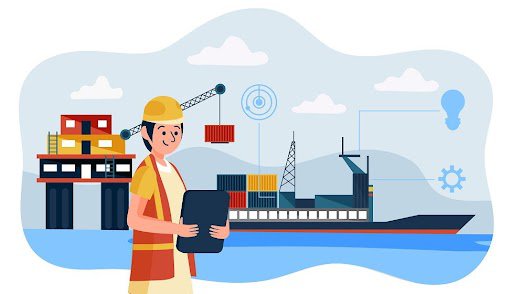
Inflationary pressures have been impacting sea freight rates for years. The rise in inflation rates has led to higher operational costs, which in turn results in an increase in ocean freight rates. The impact of inflation has not only affected the ocean freight industry but also businesses that rely on ocean freight as their primary mode of transportation. Managing ocean freight shipping and sea freight rates in an inflationary environment is a challenge that businesses need to overcome. In this article, we will discuss strategies for managing sea freight shipping and freight rates in an inflationary environment. To address these challenges, accurately calculating cargo volume with a CBM Calculator can help businesses optimize their shipping strategies and control costs.
Factors Affecting Ocean Freight Rates
Understanding the factors that affect sea freight rates is essential in managing the rates effectively. The primary factors that impact ocean freight rates include:
Supply and Demand: The law of supply and demand dictates that when demand for a service exceeds supply, the price of the service will increase. When the supply of ocean freight services is low, and demand is high, ocean freight rates will increase.
Fuel Prices: Fuel prices have a significant impact on ocean freight rates. When fuel prices increase, carriers must pass on the additional costs to customers, resulting in higher ocean freight rates.
Vessel Capacity: The availability of vessel capacity affects sea freight rates. When vessel capacity is tight, cargo freight shipping rates tend to increase.
Port Congestion: Port congestion can lead to delays, which can result in higher rates in freight shipping internationally. When ships are delayed at ports, carriers must pay additional fees, which are passed on to customers.
Strategies for Managing Ocean Freight Rates
Negotiate Contracts with Carriers
One of the best ways to manage ocean freight rates is by negotiating long-term contracts with carriers. Long-term contracts can help businesses lock in ocean freight rates for a specified period, providing them with certainty and predictability in terms of their shipping costs. Negotiating contracts can help businesses avoid fluctuations in ocean freight rates caused by inflation.
Plan Ahead
Planning ahead is another effective strategy for managing ocean freight rates. Businesses can plan their shipping schedules ahead of time to avoid peak shipping seasons when rates tend to be higher. Planning ahead also allows businesses to secure vessel capacity and reduce the risk of delays. By planning ahead, businesses can also optimize their supply chain operations and minimize shipping costs.
Diversify Shipping Methods
Another effective strategy for managing ocean freight rates is by diversifying shipping methods. Businesses can reduce their reliance on ocean freight by using air or land transport for time-sensitive or high-value goods. Diversifying shipping methods can help businesses reduce the impact of ocean freight rate increases caused by inflation.
Monitor Market Trends
Monitoring market trends is essential in managing ocean freight rates. Businesses can stay informed about changes in ocean freight shipping and rates by monitoring market trends. This information can help businesses make informed decisions about their shipping strategies. By staying informed about market trends, businesses can anticipate rate increases caused by inflation and take necessary measures to manage them effectively.
Improve Supply Chain Efficiency
Improving supply chain efficiency is another effective strategy for managing ocean freight shipping. Businesses can work to optimize their supply chain processes, reduce inventory holding costs, and streamline their operations to reduce shipping costs. By improving supply chain efficiency, businesses can manage the impact of inflation on ocean freight rates and maintain profitability.
Use Technology to Optimize Shipping
Technology solutions such as transportation management systems (TMS) can help businesses optimize their shipping processes. TMS systems can help identify cost-saving opportunities, improve routing and scheduling, and provide real-time visibility into shipping activities. By using technology to optimize shipping, businesses can manage the impact of inflation on ocean freight rates effectively.
Must Overcome to Maintain Profitability
By understanding the factors that affect ocean freight rates and implementing effective strategies, businesses can manage the impact of inflation on their shipping costs. Negotiating contracts with carriers, planning ahead, diversifying shipping methods, monitoring market trends, improving supply chain efficiency, and using technology to optimize shipping are all effective strategies for managing ocean freight rates in an inflationary environment.
Inflation and Ocean Freight Rates
The rise in inflation rates has a significant impact on ocean freight rates. Inflation leads to an increase in the cost of goods and services, including shipping costs. The table below shows the inflation rate in the US from 2011 to 2021.
Inflation Rate in the US from 2011-2021
|
Year |
Inflation Rate (%) |
|
2011 |
3.16 |
|
2012 |
2.07 |
|
2013 |
1.50 |
|
2014 |
1.62 |
|
2015 |
0.12 |
|
2016 |
1.26 |
|
2017 |
2.13 |
|
2018 |
2.44 |
|
2019 |
1.81 |
|
2020 |
0.62 |
|
2021 |
2.91 |
Source: Trading Economics
As shown in the table, the inflation rate in the US has fluctuated over the years, but has generally increased since 2015, peaking at 2.91% in 2021. This highlights the impact of inflation on shipping costs, as discussed in the article.
As the inflation rate increases, the cost of fuel, labor, and other operational costs for carriers also increases, ultimately increasing ocean freight shipping. The chart below shows the average cost of shipping a container from China to the US from 2010 to 2021.
Average Cost of Shipping a Container from China to the US from 2010-2021
|
Year |
Average Cost of Shipping (USD) |
|
2010 |
2,139 |
|
2011 |
2,392 |
|
2012 |
2,324 |
|
2013 |
2,432 |
|
2014 |
2,456 |
|
2015 |
1,819 |
|
2016 |
1,663 |
|
2017 |
1,395 |
|
2018 |
1,722 |
|
2019 |
1,676 |
|
2020 |
2,177 |
|
2021 |
3,730 |
Source: Drewry
As shown in the table, the average cost of shipping a container from China to the US has fluctuated over the years, but has generally increased since 2015, reaching a peak of 3,730 USD in 2021. This increase is partly due to inflationary pressures, as discussed in the article.
Comparison of Ocean Freight Rates by Carrier
|
Carrier |
Rate per 40-foot container (USD) |
|
APL |
2,898 |
|
CMA CGM |
2,711 |
|
Evergreen |
2,486 |
|
Hapag-Lloyd |
2,645 |
|
Maersk |
2,821 |
|
MSC |
2,799 |
|
ONE |
2,874 |
Source: Freightos Baltic Index
As shown in the table, there is variation in ocean freight rates among different carriers. It is important for businesses to compare rates and choose the carrier that best fits their needs and budget. Additionally, it is important to keep in mind that these rates are subject to change and may be impacted by various factors, including inflation and global economic conditions.
Conclusion
Managing ocean freight rates in an inflationary environment is a challenge that requires freight shipping companies to implement effective strategies. Negotiating contracts with carriers, planning ahead, diversifying shipping methods, monitoring market trends, improving supply chain efficiency, and using technology to optimize shipping are all effective strategies for managing ocean freight rates. As shown in the table above, ocean freight shipping internationally varies significantly by carrier, making it essential for businesses to compare rates and negotiate contracts. By implementing these strategies, businesses can manage the impact of inflation on their sea freight shipping costs and maintain profitability.





 Get instant quote
and compare offers in real time
Get instant quote
and compare offers in real time